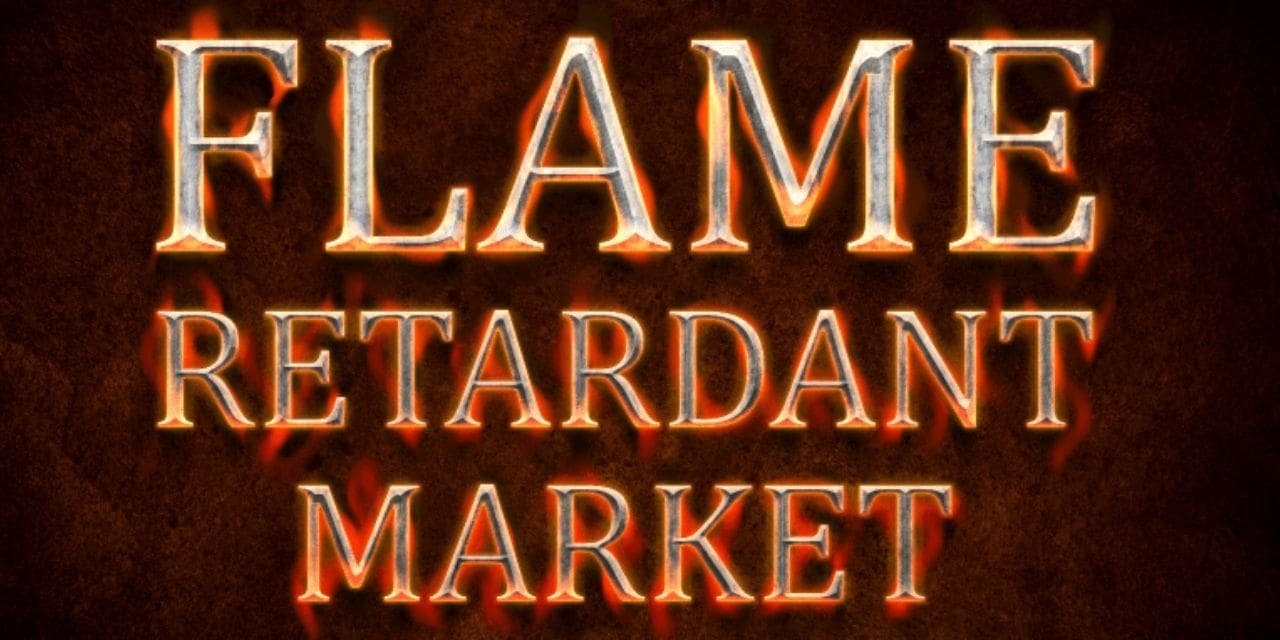As per the recently published report by MarketsandMarkets™, The “Flame Retardants Market by Type (Aluminum Trihydrate, Antimony Oxide, Brominated), Application (Epoxy, Polyolefin, Unsaturated Polyester), End-Use Industry (Building & Construction, Electronics & Appliances), and Region – Global Forecast to 2028″, size was USD 7.0 billion in 2022 and is projected to reach USD 9.5 billion by 2028, at a CAGR of 5.2%, between 2023 and 2028. The flame retardants market is mainly driven by the increase in fire accidents in various industries and fire safety guidelines. The increasing demand for consumer electronics in the emerging markets of Asia Pacific is expected to provide growth opportunities for players in the flame retardants market.
Download PDF Brochure: https://www.
Browse
- 190 Market data Tables
- 80 Figures
- 280 Pages and in-depth TOC on “Flame Retardants Market – Global Forecast to 2028”
This report also provides a comprehensive analysis of the companies listed below:
The key players profiled in the flame retardants market report include Albemarle Corporation (US), Clariant AG (Switzerland), LANXESS AG (Germany), BASF SE (Germany), ICL Group Ltd. (Israel), Nabaltec AG (Germany), Huber Engineered Materials (US), ADEKA Corporation (Japan), Italmatch Chemicals S.p.A. (Italy), and Avient Corporation (US). These companies have reliable manufacturing facilities as well as strong distribution networks across key regions, such as North America, Europe, and Asia Pacific. They have an established portfolio of reputable products and services, a robust market presence, and strong business strategies. Furthermore, these companies have a significant market share, products with wider applications, broader geographical use cases, and a larger product footprint.
Recent Developments in Flame Retardants Market Industry
- In January 2022, Huber Engineered Materials completed the acquisition of MAGNIFIN Magnesiaprodukte GmbH & Co. KG (“MAGNIFIN”). MAGNIFIN’s products are sold globally by Martinswerk GmbH as part of the HEM Fire Retardant Additives (FRA) strategic business unit, which produces a wide range of halogen-free fire retardants, smoke suppressants, and specialty aluminum oxides.
- In January 2020, BASF closed the acquisition of Solvay’s polyamide (PA 6.6) business. The transaction broadened BASF’s polyamide capabilities with innovative products. With the acquisition of Solvay’s polyamide business, BASF had its first Underwriter Laboratories (UL) certified lab in Asia, adding to its existing labs.
- In March 2020, Clariant collaborated with Floreon to expand its high-performance biopolymer applications to additional markets. The companies will work together on a broad range of additives such as stabilizers, flame retardants, and surface aids.
- In December 2021, Nabaltec AG expanded its production capacities for boehmite at the Schwandorf site, Germany, by investing an amount in the mid-double-digit million range. Production output will be more than doubled from 10,000 to 25,000 tons per year. Commissioning is slated for the second half of 2023.
Request Sample Pages: https://www.
Based on Type, the flame retardants market is segmented as aluminum trihydrate (ATH), antimony oxide, brominated, chlorinated, phosphorus, nitrogen and others. Governmental regulations and directives, and the increasing liking towards eco-friendly materials by customers and original equipment manufacturers (OEMs) resulted in restricted use of halogenated additives that are largely used in flame retardancy applications, especially in the electrical & electronics industry. This has in turn driven the demand for non-halogenated flame retardants such as phosphorus and aluminum trihydrate.
Based on end-use Industry, the flame retardants market is segmented as building & construction, electronics & appliances, automotive & transportation, wires & cables, textiles and others. The necessity to safeguard buildings and occupants from fire threats and other safety-related issues are major drivers driving the demand for flame retardants in the building and construction sector. Building codes and regulations in many countries and regions mandate the use of flame-retardant materials in various construction applications. These rules are made to improve fire safety and lessen the possibility of building fires spreading. Flame retardants must be used in construction materials to comply with these requirements. All these factors drive the demand for flame retardants in building & construction end-use industry.
Based on Application, the flame retardants market is segmented as epoxy, polyolefins, unsaturated polyesters, polyvinyl chloride, polyurethane, ABS & blends, polystyrene and others. Building codes and fire safety rules frequently demand that materials used in the building, electronics, transportation, and other industries fulfill particular fire performance standards. Epoxy flame retardants lessen the flammability and increase the fire resistance of epoxy-based materials, assisting them in complying with these laws. All these factors have driven the demand for flame retardants in epoxy materials.
Based on Region, Western Europe accounted for the second largest market share, both in terms of value and volume, in 2022. A significant demand for flame retardants in Western Europe can be attributed to many variables, including building & construction activities, factors related to safety regulations, industry needs, environmental concerns, and technological advancements. Flame retardants are used in various applications across industries, and their demand in Western Europe reflects these diverse requirements.
Get 5% Discount Now: https://www.

